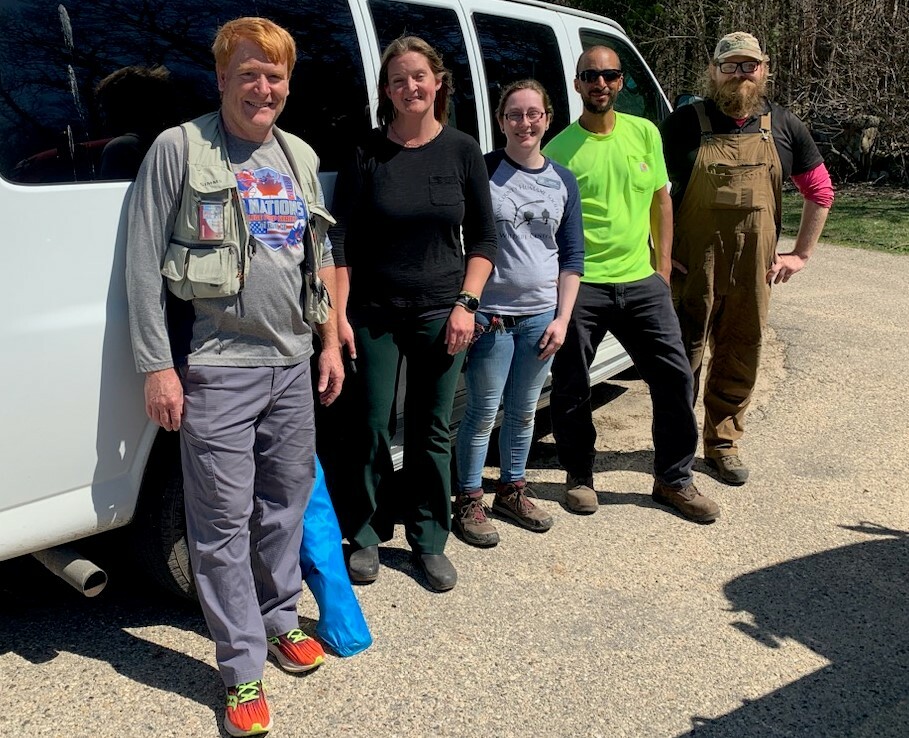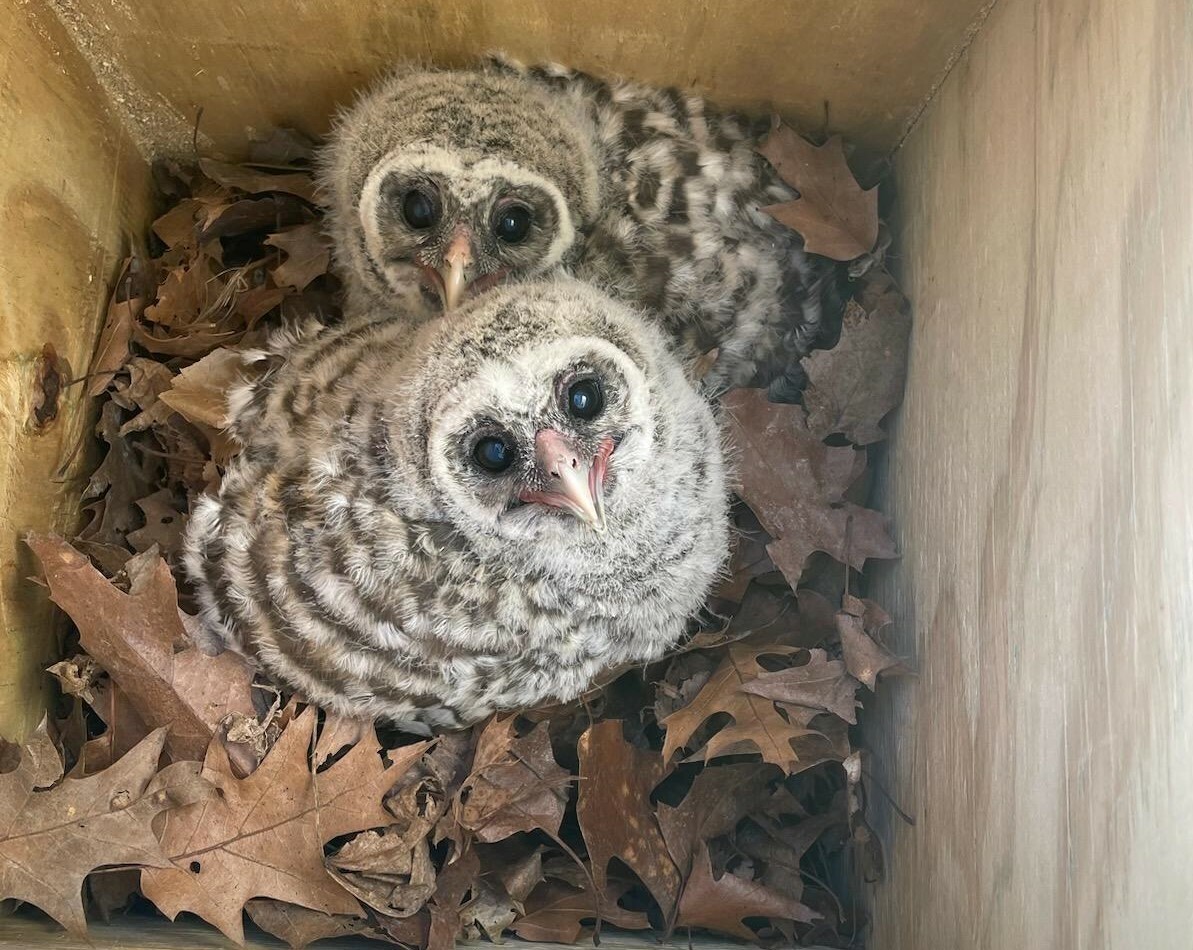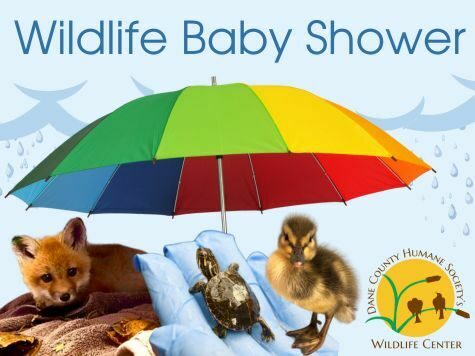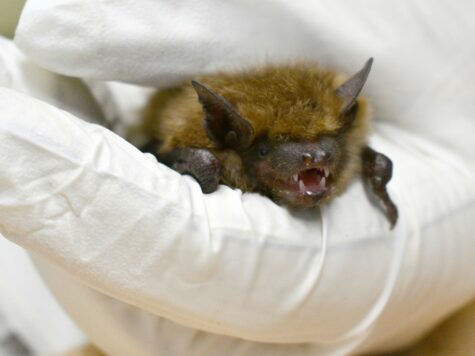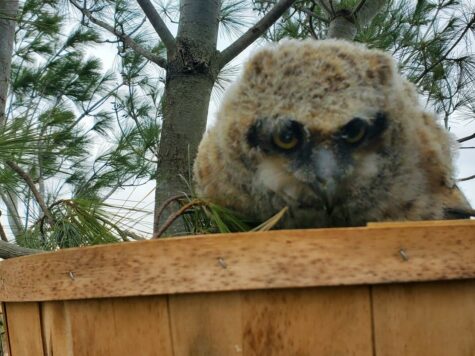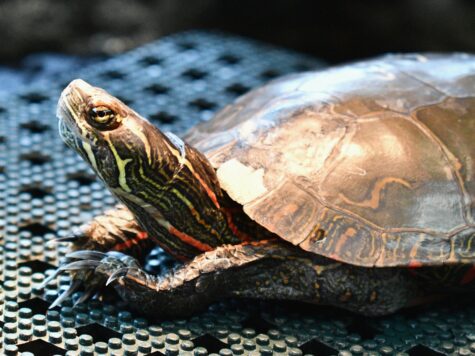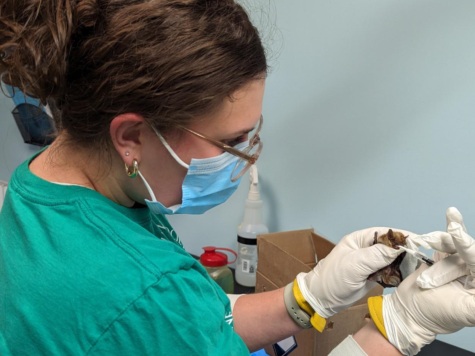Barred owls typically breed in the winter months, and babies hatch from their eggs by early spring. This year in April, two hatchlings were found down on the ground in the UW-Madison Lakeshore Nature Preserve (LSNP) that required specialized rescue and intervention. Our team of raptor re-uniters from DCHS’s Wildlife Center, including Senior Licensed Rehabilitator Sarah Karls, joined local arborists and LSNP staff to climb the nesting tree where they kept falling from. It took two days with different volunteers and arborists involved to get this case resolved!
One small hatchling fell out and needed to be placed back into the original nest cavity. Then, the second baby was found out of the nest the next morning, and it needed to be put back up. Both birds were just shy of branching age, meaning they were too young to be on the ground.
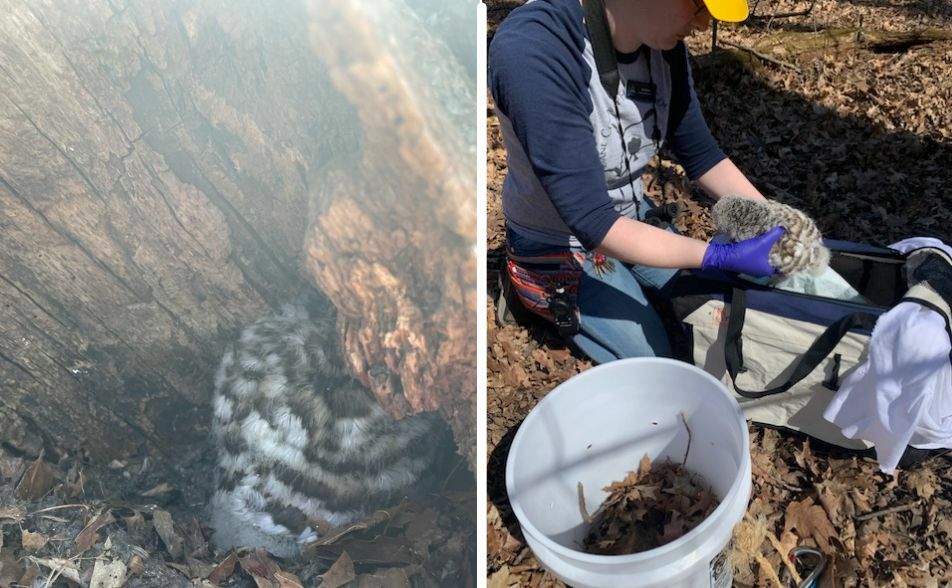
The cavity was obviously not keeping them in well enough, so it required securing something different to the tree for them to use instead. A new nest box was installed and the babies were put inside (again), all while mom was keeping watch. Thankfully, both of these two “little balls of fluff” are now safe and sound, all because a few dedicated folks cared about these owls. Thank you to everyone who was involved!
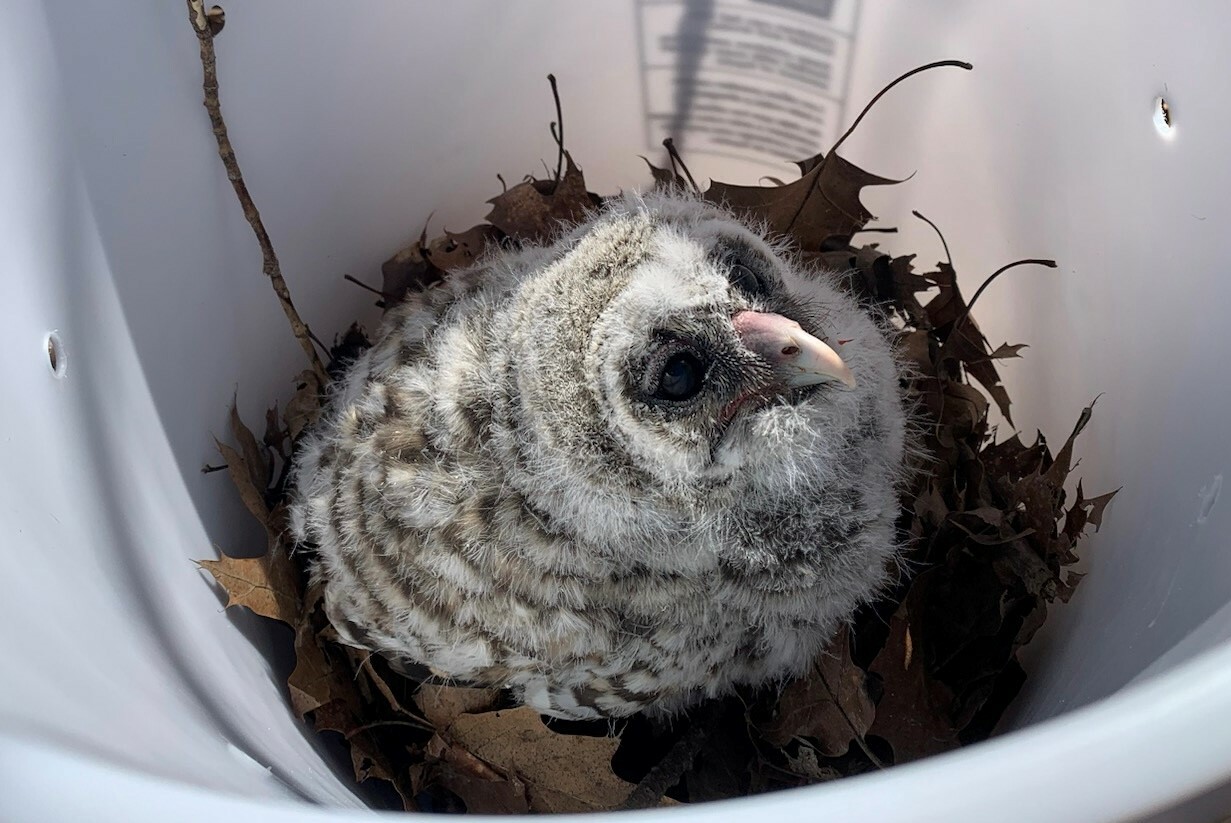
What is Raptor Reuniting? What Does it Entail?
- Raptor reuniting occurs between late February to June, with a majority occurring earlier in the season.
- DCHS’s Wildlife Center program partners with local arborists for reunites that require tree climbing by a certified professional. Arborists and volunteers are effectively “on call” via text to assist with a reunite. Reuniting is weather-dependent, as climbing trees safely is crucial and is a decision made by arborists.
- Some reuniting situations require scoping out the location ahead of time to verify the presence of a nest or the parents. This task is often completed by non-arborist raptor volunteers; however, arborists are welcome to assist. Often, finders or other observers will be present, too, asking questions about the program or the health of the baby.
- DCHS volunteers bring reunite-specific supplies, such as a nest box or basket, enrichment, and tools to secure the original nest site. Arborists bring their own climbing supplies to rappel the trees.
- Teams typically include one arborist and one raptor volunteer working together to hoist a bucket up the tree and replacing the baby back into a new or repurposed nest at the correct height. This kind of procedure is typical for reuniting nestlings, but babies that are older fledglings (also known as “branchers”) may only need a boost back up to a lower branch.
- Raptor volunteers stay to observe the nest site, confirming that the parents successfully return to provide food and care to their babies. Sometimes a reunite happens in the middle of the day, and other times it’s late at night! Owls are nocturnal, and parents are more active at that time; however, they stay with their nestlings round-the-clock when they first hatch to keep them warm until they have enough feathers to thermoregulate.
Jackie Sandberg is the Wildlife Program Manager at DCHS's Wildlife Center
